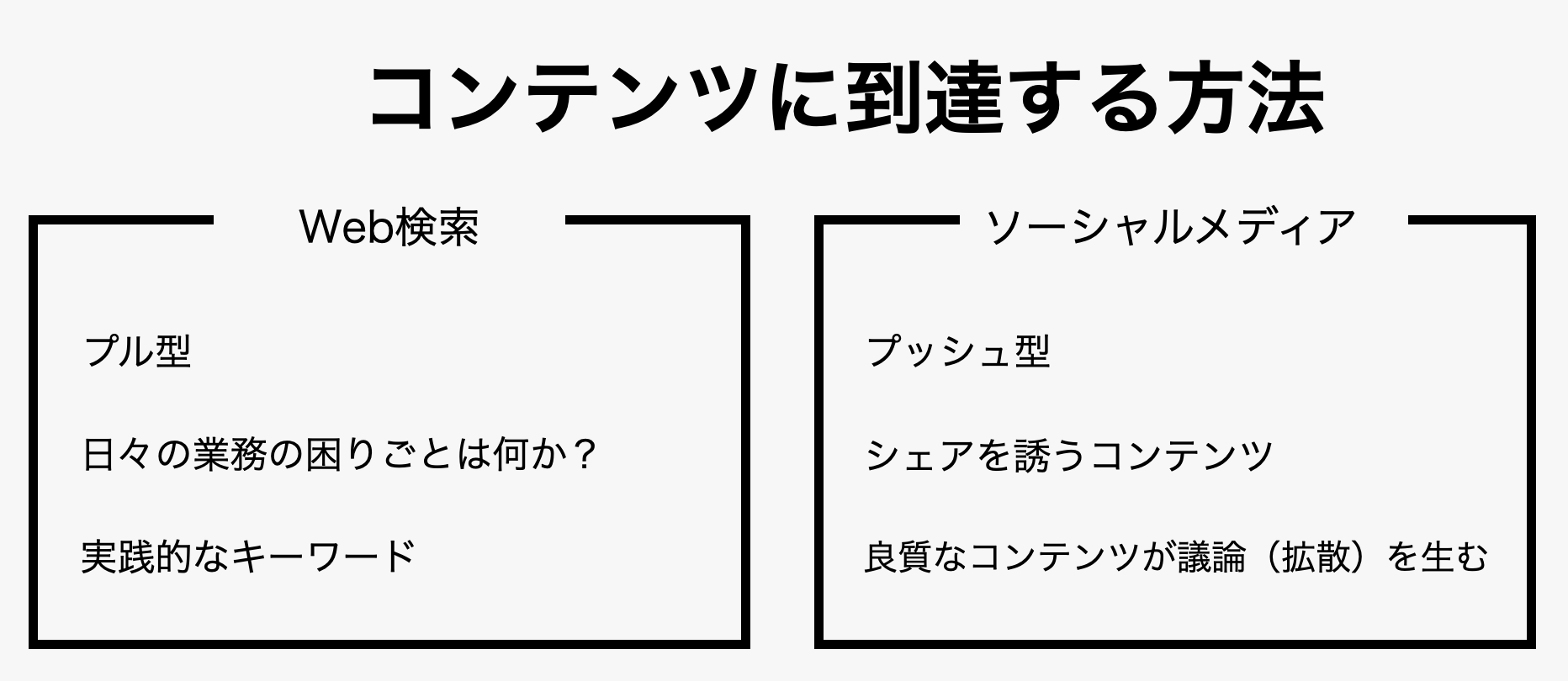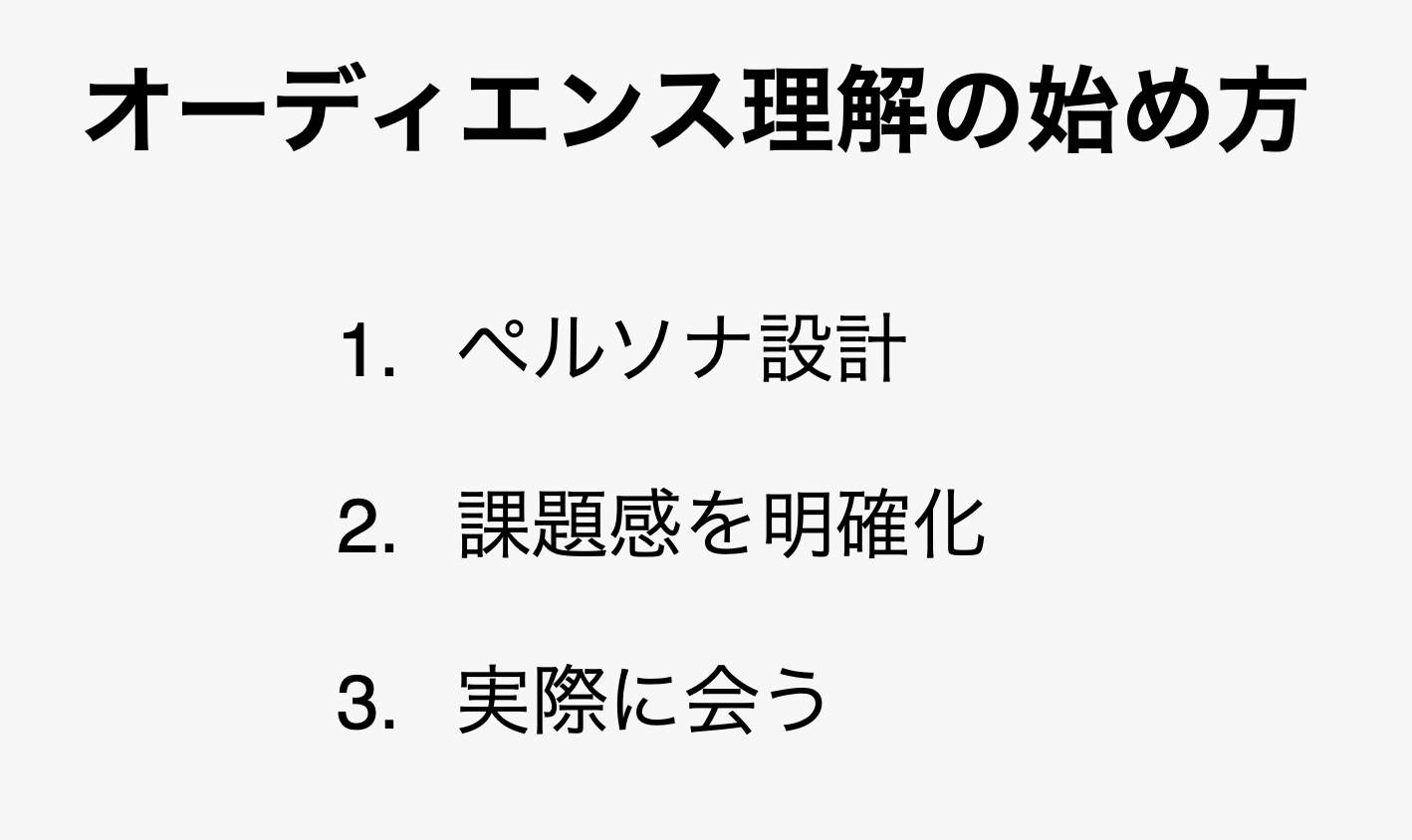
Let’s explore the fundamentals of content marketing for DevRel. In our previous post, we discussed the differences from tech blogs, and now we’ll dive deeper into audience understanding.
In content marketing, the audience refers to readers and viewers (hereafter referred to as “target audience”). These are the developers who are the target users of your service.
Developers can discover content through various channels, with web search and social media being the most prominent.

Web search is a pull-type medium. This means people search when they have a problem they need to solve. One approach is to prepare content that addresses these problems and their solutions in advance.
Understanding your audience means exploring what challenges developers face in their daily work when using your service.
In this case, developers rarely search using broad keywords. Instead, they use more practical search terms. Sometimes they might even search using error messages.
When targeting decision-makers for product adoption, they might search using broad terms like “What is (technology)?” This indicates a need for quick information about the industry.
For traffic coming through social media (X, Facebook, etc.), content that encourages sharing works best. In Japan, Hatena Bookmark remains strong, and increasing bookmark counts can potentially lead to explosive traffic growth.
In this case, comprehensive articles tend to perform better than highly technical ones. Content that’s useful for beginners to intermediate users over the medium to long term is preferred.
Additionally, quality content often sparks discussions among developers. These discussions frequently take place on social media, leading to further distribution. While controversial content can also spread, it’s not recommended as it can damage your brand.
Sometimes, especially right after launching a service, you might not fully understand your audience. Surprisingly, the target audience you envisioned often differs from the actual audience that emerges.
While you’ve likely done research, it can still be challenging. For example, it’s difficult to know which programming language is most desired for server-side usage. It might be Java or .NET for enterprise, or PHP, Ruby, Python, Go, Rust, Node.js, etc. Providing SDKs for all languages is impractical.

In such cases, start by writing articles for each language using direct HTTP methods without SDKs. The most-read articles likely indicate what developers are actually looking for.
This is just one example, but combining it with analytics can reveal hidden developer needs. The same applies when writing about potential developer pain points. Analytics will show if they’re actually struggling with these issues. These insights become valuable feedback for new feature development and contribute to market fit.
The key point here is that without content, you won’t capture analytics data and won’t be able to identify needs. Over-targeting might cause you to miss potential future customers. Blogs are perfect for experimentation - actively explore what needs exist.
Let’s break down the process of understanding your audience into three simple steps.

When understanding your audience, persona design is crucial. This means concretely defining which developers will use your service.
“Developers” is too broad, so we need to add several tags:
Adding these tags helps increase the resolution of your understanding.
Next, clearly define the challenges they face. Why? Because if they don’t have any problems, they won’t need your service.
The typical flow is:
This leads to user registration or inquiries.
While team-based persona design and pain point analysis are important, the fastest way is to meet potential users in person.
There are several ways to conduct interviews, but the most recommended is participating in communities. Join communities and engage in conversations during networking events. You might get more practical and specific insights than through research companies.
Of course, talking to internal team members is also recommended. Internal members can provide candid feedback. Similarly, reaching out to engineers in group companies can be valuable.
As your service grows and market conditions change, developers’ perspectives evolve. In rapidly changing industries like frontend development, technology trends shift quickly. What was correctly understood a year ago might become outdated.
Therefore, audience understanding needs regular updates. Continuously participate in communities to maintain awareness, and use blogs to track trend changes. With heightened awareness, you’ll quickly notice when information flow changes or new services emerge.
In the IT industry, shooting stars (or “black ships” in Japanese context) can suddenly appear and completely transform the market. These game-changers can come from any country. Recent examples include AI and LLMs. Being agile in catching these shifts and adjusting your strategy leads to long-term growth.
We’ve explored audience understanding in content marketing. From experience, many teams don’t correctly understand their target developers. This often happens when discussions stay within the team and rely on assumptions. There’s a significant difference between making assumptions and actually meeting people and understanding the field.
Please strive for proper audience understanding to execute optimal content marketing.
MOONGIFT supports your DevRel & developer marketing in the Japanese market. If you’re interested, please contact us.
You will receive news and updates about DevRel via email.